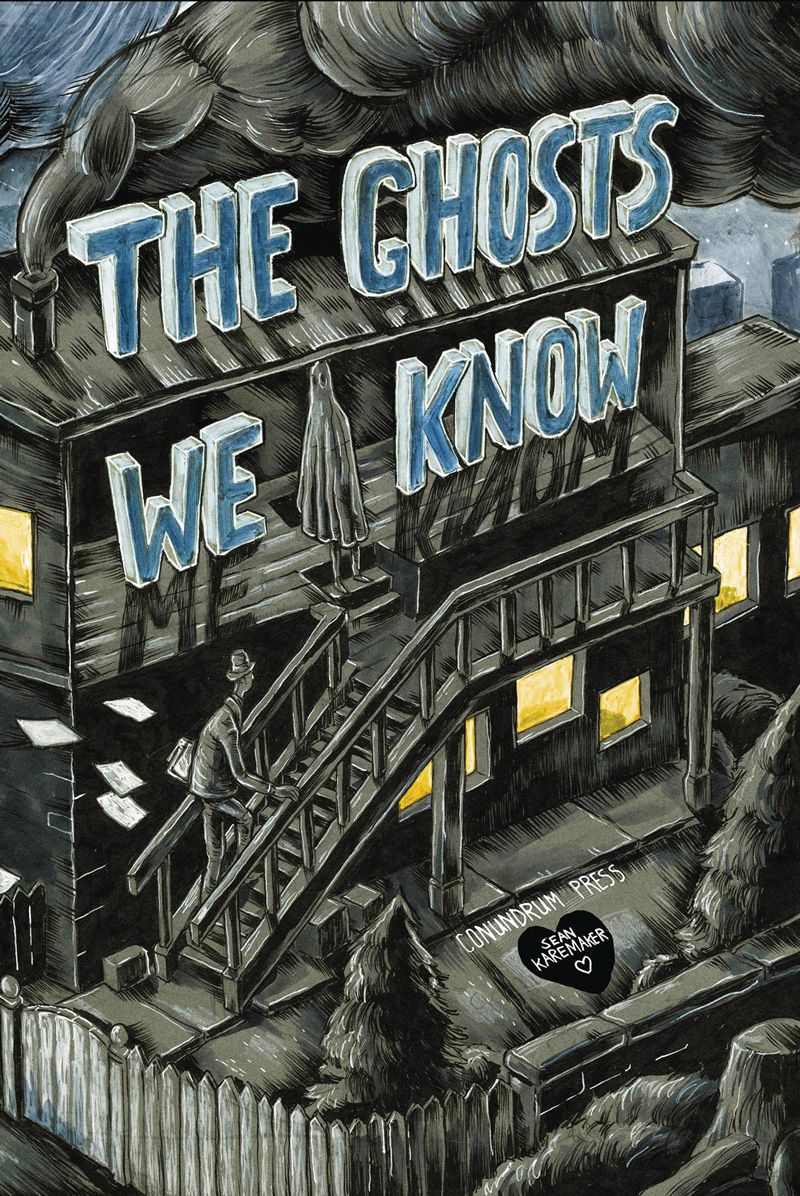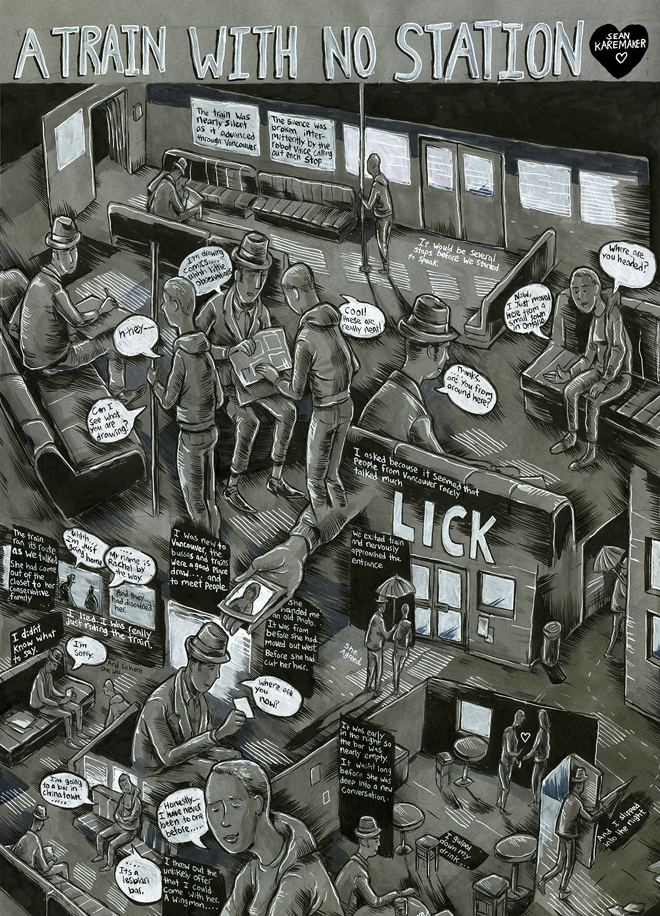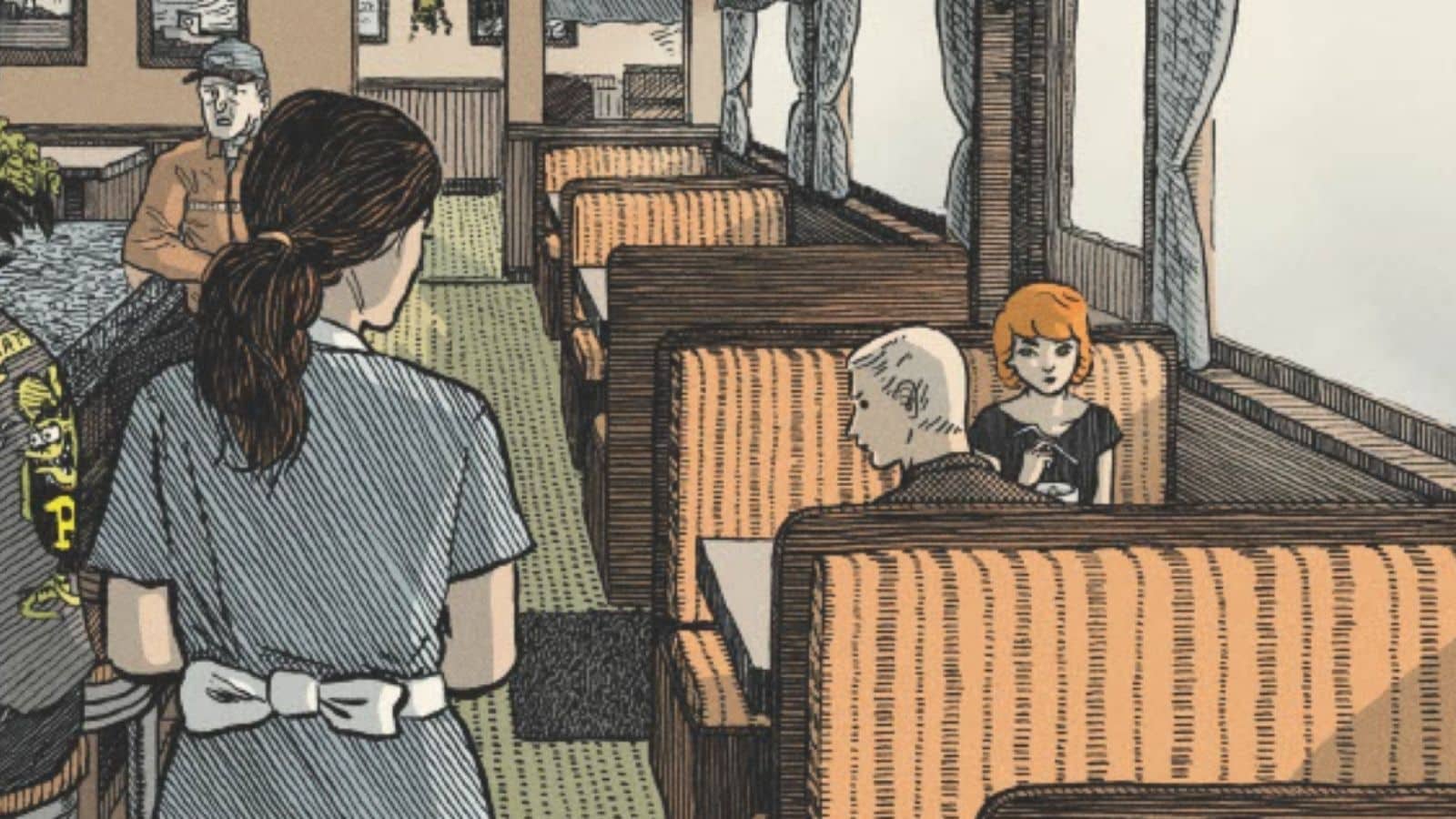It’s not a visibly large book, about average looking at a glance, but Sean Karemaker’s The Ghosts We Know is more dense than most autobiographical comics you will encounter — dense with ideas, dense with psychology, dense with illustration that marks dimensions far beyond the one on its two-dimensional surface.
Karemaker’s approach to autobiographical comics isn’t your typical one, and it succeeds in elevating the form. Along with a consistent tone that he’s painstakingly crafted around his remembrances, Karemaker presents these stories about himself not in a linear fashion, nor even a casual one, but as carefully selected varying points in his life that add up to something more than just his story.
With a murky art style dominated by blacks and grays, Karemaker creates a mood that hangs over each story, unifying them emotionally. With the atmosphere of the art, it seems as though Karemaker’s entire life has taken place exclusively in a lost twilight when strangers meet and transformations are made. His expansive illustrative spreads between the actual stories almost qualify as world-building, mapping out the dream-like universe that his autobiography exists in.
The theme of each story is largely about an encounter with another human being that made some impact in his life — sometimes great, sometimes small. Sometimes these are remembered with clarity, other times fuzziness. Together, they form a unified narrative presented in episodes, and yet totally devoid of an episodic quality. It is not a linear story as we think of it — instead of time as the structure, it is guided by psychology.
Karemaker opts for strict fiction once — or, at least, once that’s apparent, in My Life As A Leaf, which covers a night journey as a stowaway on a boat and an encounter with a mysterious man who claims a magical metamorphosis. It fits in perfectly well with the rest of the stories thanks to a mood that is consistent with the rest of the book — it doesn’t seem out of place at all.
This can be juxtaposed with his final piece in the book, the title story, that covers a late night return to his childhood home, and the recovery of a box of his old creations that he takes out into the night. As it segues into silent full-page spreads of a dreamtime forest, crowded with people of varying ages and healthiness, making a trek to a place where urban landscapes mix with the trees, and are possessed by watching faces, Karemaker’s life, both physical and emotional, comes full circle, with dream and reality, past and future, hope and sorrow colliding into one dreamscape.
Karemaker’s stories take a fable-like tone often, rather than a debriefing of the daily intricacies, carefully and artfully related, instead of being casually unloaded. Karemaker’s life moments are presented as encounters with greater truths, as in … where a road trip with his great-aunt and a furious forest leads to a contemplative quiet realization, while in the following story Karemaker grapples for meaning but acknowledges that sometimes experiences aren’t so easy to unravel philosophically. This speaks to the dichotomy of what Karemaker presents of his life. Whether stories about childhood or adulthood, he is always searching, he knows there is no final, dominant truth to be uncovered, just a continuous journey, the lessons of one part leading to the knowledge we use in the next.








